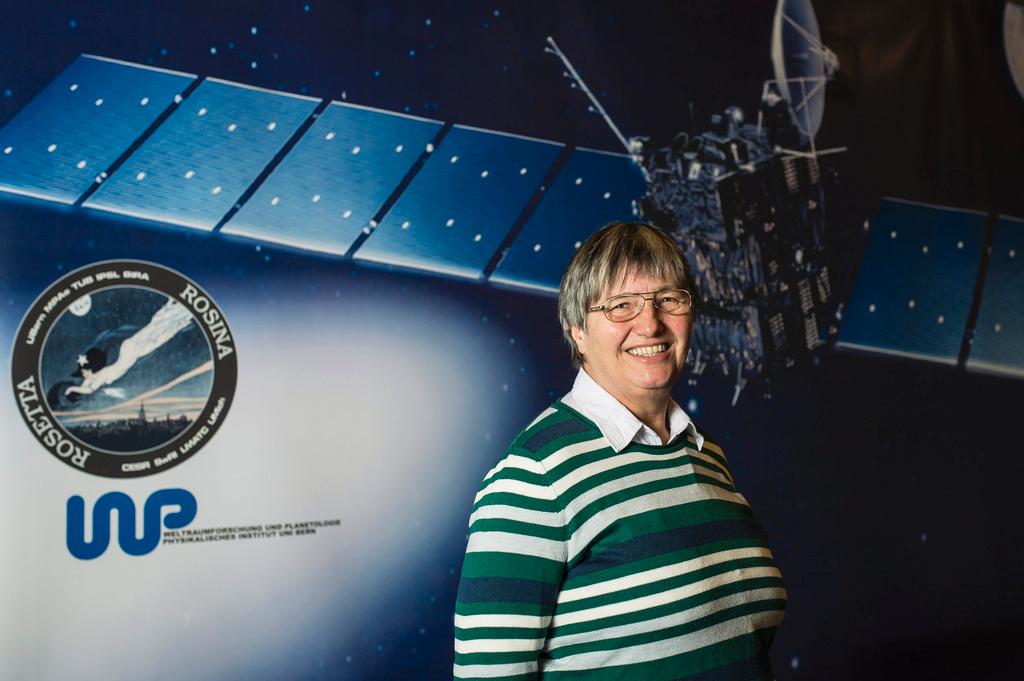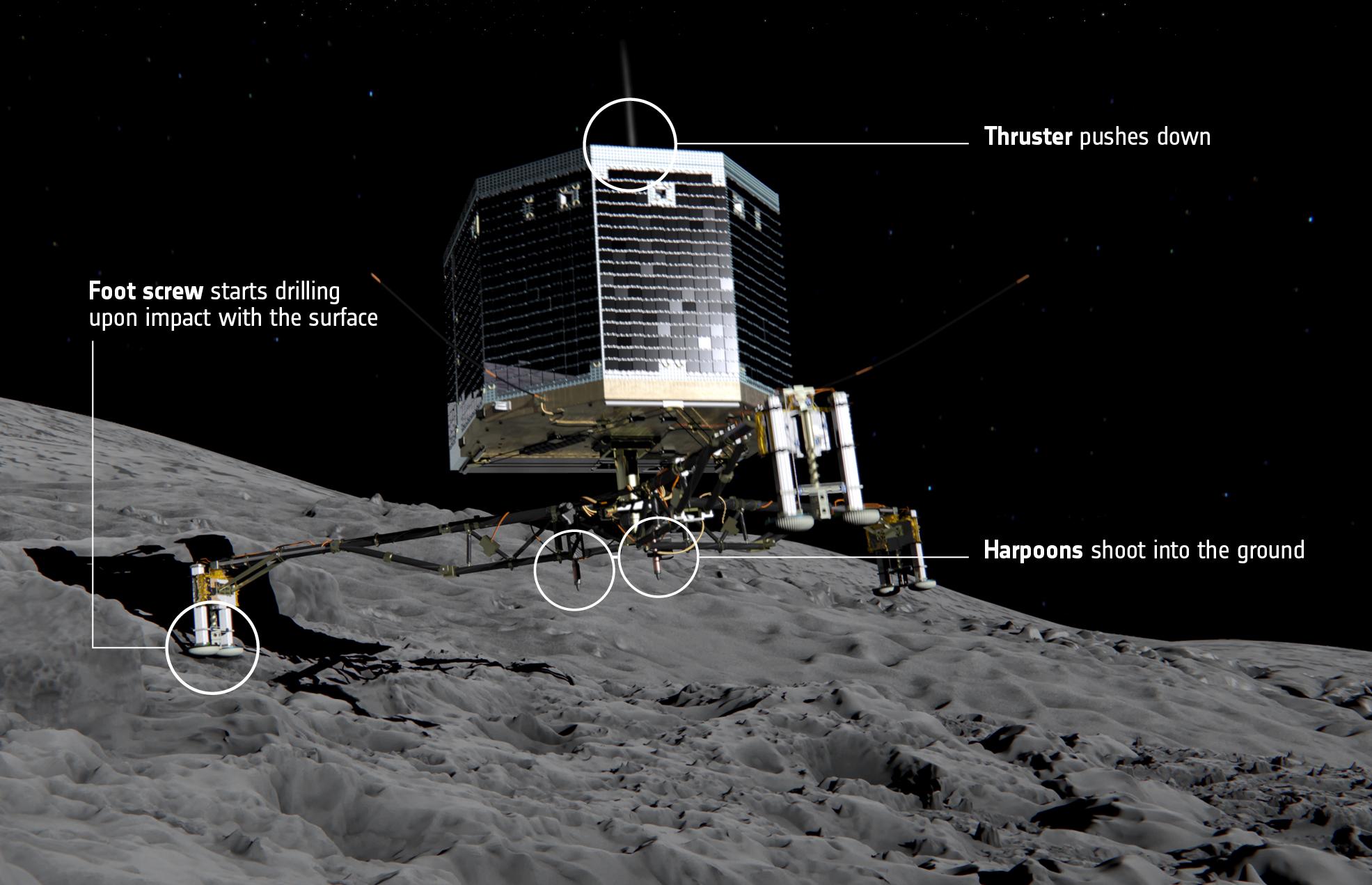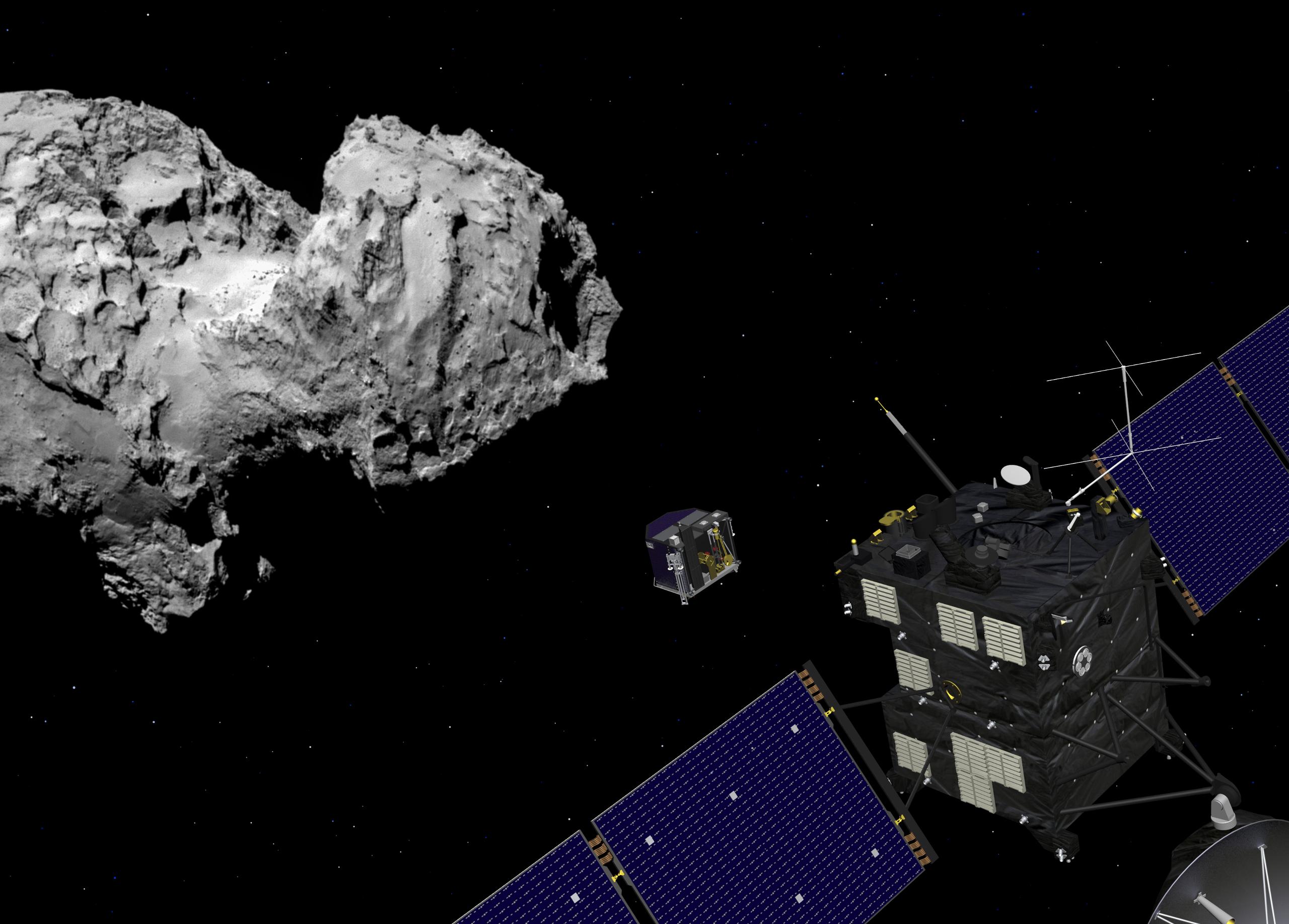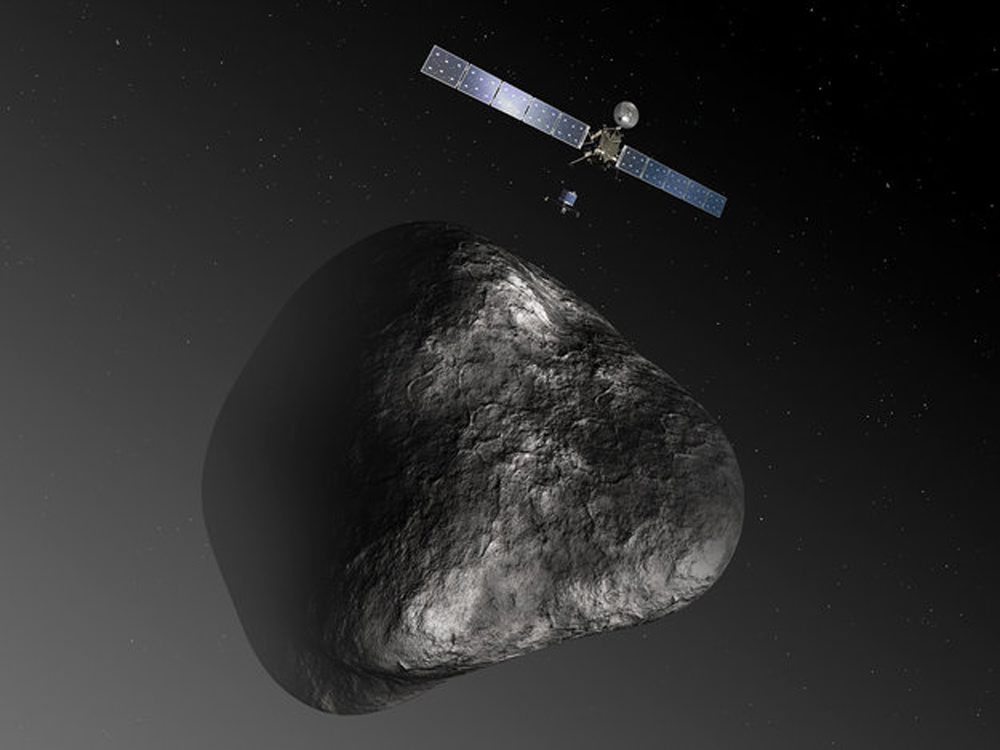Earth’s water didn’t come from comets, Bern research finds

Data from the ROSINA instrument aboard the Rosetta spacecraft has shown that comets did not bring water to Earth billions of years ago. It’s the first major finding to come out of the University of Bern-based project.
The results, just published in the journal Science, show that the Earth’s water could not have come from comets like the one scientists landed on last month, dubbed “Chury” for short. That’s because ROSINA, a sensor made up of two mass spectrometers and a pressure sensor, found far too much of the element deuterium in the material being emitted from Chury.
“The comet has a level of deuterium more than three times higher than what’s found on Earth,” says ROSINA principal investigator Kathrin Altwegg of the University of Bern.
A heavier form of hydrogen, deuterium is a very stable element which does not deteriorate over time. For that reason, it’s one of the best ways to measure activity in the solar system as far back as its origins. Any celestial body that brought water to Earth would have to have about the same amount of the element as Earth in order to have plausibly been the planet’s water source.
Thirty years ago, Altwegg was also involved in a project measuring deuterium levels in the comet Halley, which was found to have twice the amount of the element that was present on Earth. That research cast doubt on the possibility that comets were what helped fill the planet’s oceans billions of years ago.
But, says Altwegg, the theory resurfaced in 2011 when it became possible to measure comets in a different part of the solar system. Those were compatible with Earth’s deuterium levels – so the theory that such comets had brought water to our planet persisted.
However, the latest data gathered from Chury by ROSINA has put that theory to rest once and for all – and nicely capped off Altwegg’s career.
“I still remember the excitement when we got a [deuterium] value which was twice the terrestrial value [30 years ago],” Altwegg says. “I’m a very lucky woman to end my career with another exciting result for [deuterium content] in water in a comet, helping to unravel the mystery between comets and the Earth.”
New horizons
“You may be disappointed [in the finding that comets did not bring water to Earth],” Altwegg told journalists in Bern. “But we are not.”
That’s because it has opened the door to new theories and potential for exploration into the origins of our water supply. The most prominent among them is that smaller asteroids, not comets, were the source.
“Our results rather support models that include asteroids as the main delivery mechanism for Earth’s oceans,” Altwegg says.
Plus, she adds, Chury turned out to be an ideal object to research because it’s a sort of “primordial time capsule,” frozen in time.
“Our comet is one of the most pristine objects in the solar system – it has not changed much in 4.6 billion years.”
Where’s the lander?
The Rosetta project and its Philae lander made history last month as the first mission ever to rendezvous with, orbit around and land on a comet. In the days following the successful touchdown, however, it became clear that Philae had not landed where originally intended. After bouncing a few times, it came down in a sort of cave where the sunlight needed to power its batteries is sparse.
But Matt Taylor, the European Space Agency’s Rosetta project scientist, told swissinfo.ch that “what happened with the lander is good” because the cave it landed in provides interesting samples to analyse. And, every box has been ticked on the mission plan, with Philae “in the state we expected it to be in,” Taylor said.
He adds the teams at the ESA have already gotten more data than they expected from Philae, even though “certain operations were not fulfilled” because of its truncated battery life.
The lander is currently in hibernation with the expectation that it will re-awaken in the spring or summer of next year – if the team is able to pinpoint its location to figure out how much sunlight it will have when it wakes up.
“We expect to pinpoint its absolute location in the next few weeks,” Taylor added.
And ROSINA’s research into Chury’s makeup will continue for at least another year, with more significant findings expected. That’s at least how long the Rosetta spacecraft carrying ROSINA will continue to orbit the comet, but Taylor says he hopes to get funding to continue Rosetta’s orbit even longer.
“I think we have a pretty good case for extending the mission,” he says.
“Swiss made” spectrometers and cameras
ROSINA (or Rosetta Orbiter Spectrometer for Ion and Neutral Analysis), weighs 35 kilos, or 20% of the Rosetta probe’s payload. The instrument is made up of two mass spectrometers that can detect and identify molecules according to their mass.
The device was developed and constructed by an international consortium under the direction of the Physics Institute at the University of Bern. Seven cameras on board the lander, Philae, provide panoramic vision and have captured stunning images, including “selfies” of the probe with Mars and the comet in the background.
Space-X, a Neuchâtel-based firm, as well as the French Institut Astrophysique Spatiale and the Centre National d’Etudes Spatiales were responsible for the cameras’ design and construction.

In compliance with the JTI standards
More: SWI swissinfo.ch certified by the Journalism Trust Initiative




You can find an overview of ongoing debates with our journalists here. Please join us!
If you want to start a conversation about a topic raised in this article or want to report factual errors, email us at english@swissinfo.ch.